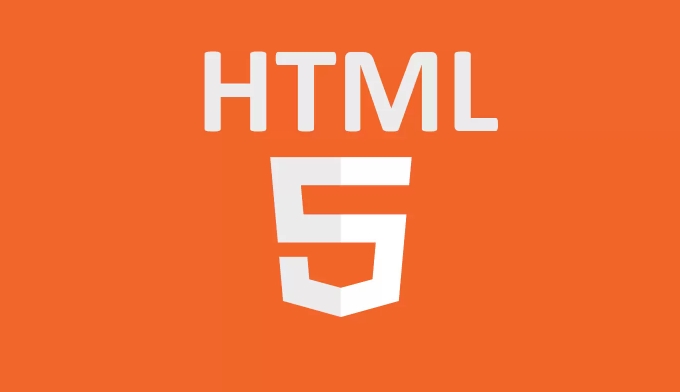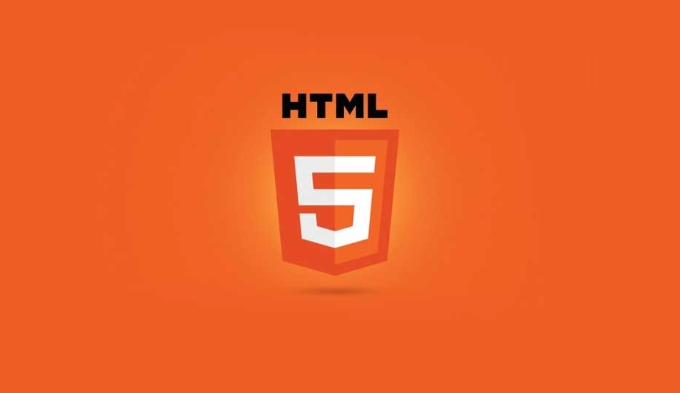Implementing real-time communication using HTML5 Server-Sent Events.
Jul 08, 2025 am 01:07 AMServer-Sent Events (SSE) is a technology in HTML5 used to implement efficient one-way communication between servers and clients, suitable for notification push and data updates. It is based on the HTTP protocol and supports automatic reconnection. The message format is simple. The front-end listens to events through EventSource. The back-end needs to set the text/event-stream type and keep the connection. Common problems include connection timeout, message loss and concurrency restrictions, which are suitable for lightweight real-time scenarios.

Real-time communication is becoming increasingly important in modern web applications, and HTML5's Server-Sent Events (SSE) provides a lightweight and efficient solution. Compared with WebSocket, it is more suitable for one-way communication scenarios between servers and clients, such as notification push, data update, etc.

What are Server-Sent Events?
Server-Sent Events is part of HTML5 that allows servers to push data to browsers over long HTTP connections. Unlike traditional polling methods, SSE uses persistent connections, allowing the server to actively send updates, reducing unnecessary requests and delays.
The main features include:

- Based on the standard HTTP protocol, no special server support is required
- Automatic reconnection mechanism, after disconnection, attempt to re-establish connection
- The message format is simple and clear, easy to parse
- Only support one-way communication from server to client
How to use SSE: Front-end part
The front-end uses JavaScript to create an EventSource object to listen for server events. The basic usage is as follows:
const eventSource = new EventSource('your-endpoint-url');
eventSource.onmessage = function(event) {
console.log('Received message:', event.data);
};
eventSource.onerror = function(err) {
console.error('Error occurred:', err);
};You can also listen for specific event types, such as:

eventSource.addEventListener('customEvent', function(event) {
const data = JSON.parse(event.data);
updateUI(data);
});A few points to note:
- Make sure the URL supports correctly setting the CORS header when cross-domain
- Browser compatibility is good, and mainstream modern browsers support it
- Don't forget to handle errors and connection interruptions
How to implement SSE interface on the backend
The backend needs to return a response stream that remains open and set the correct MIME type to text/event-stream . Different languages ??have different implementation methods, but the core ideas are the same.
Take Node.js Express as an example:
app.get('/sse', (req, res) => {
res.setHeader('Content-Type', 'text/event-stream');
res.setHeader('Cache-Control', 'no-cache');
res.setHeader('Connection', 'keep-alive');
// Send a message res.write(`data: ${JSON.stringify({ message: 'Hello from server' })}\n\n`);
// You can send updates regularly const interval = setInterval(() => {
res.write(`data: ${JSON.stringify(getLatestData())}\n\n`);
}, 5000);
req.on('close', () => {
clearInterval(interval);
res.end();
});
});Key points:
- Set the correct response header
- Message format must comply with the specification:
data: ... \n\n - Keep the connection open until the client closes or error occurs
FAQs and Optimization Suggestions
Although SSE is simple and easy to use, there are still some details to pay attention to in actual deployment:
- Connection timeout : Some agents or load balancers may interrupt long connections and can periodically send comment lines (such as
:\n\n) to maintain the connection. - Message order and loss : SSE does not guarantee reliable delivery of messages, and additional mechanisms should be considered for scenarios that require strict order and do not lose messages.
- Concurrency restrictions : Browsers usually have restrictions on the number of EventSources under the same domain name, so pay attention to reasonable reuse.
- Performance considerations : Each connection will occupy a certain amount of resources, and the server carrying capacity needs to be evaluated under high concurrency.
If you just want to do simple status updates or notification pushes, SSE is a good choice; if two-way communication is required, WebSocket is more suitable.
Basically that's it. Mastering the use of SSE can allow your application to achieve a smooth real-time update experience without complex protocols.
The above is the detailed content of Implementing real-time communication using HTML5 Server-Sent Events.. For more information, please follow other related articles on the PHP Chinese website!

Hot AI Tools

Undress AI Tool
Undress images for free

Undresser.AI Undress
AI-powered app for creating realistic nude photos

AI Clothes Remover
Online AI tool for removing clothes from photos.

Clothoff.io
AI clothes remover

Video Face Swap
Swap faces in any video effortlessly with our completely free AI face swap tool!

Hot Article

Hot Tools

Notepad++7.3.1
Easy-to-use and free code editor

SublimeText3 Chinese version
Chinese version, very easy to use

Zend Studio 13.0.1
Powerful PHP integrated development environment

Dreamweaver CS6
Visual web development tools

SublimeText3 Mac version
God-level code editing software (SublimeText3)
 Handling reconnections and errors with HTML5 Server-Sent Events.
Jul 03, 2025 am 02:28 AM
Handling reconnections and errors with HTML5 Server-Sent Events.
Jul 03, 2025 am 02:28 AM
When using HTML5SSE, the methods to deal with reconnection and errors include: 1. Understand the default reconnection mechanism. EventSource retrys 3 seconds after the connection is interrupted by default. You can customize the interval through the retry field; 2. Listen to the error event to deal with connection failure or parsing errors, distinguish error types and execute corresponding logic, such as network problems relying on automatic reconnection, server errors manually delay reconnection, and authentication failure refresh token; 3. Actively control the reconnection logic, such as manually closing and rebuilding the connection, setting the maximum number of retry times, combining navigator.onLine to judge network status to optimize the retry strategy. These measures can improve application stability and user experience.
 Integrating CSS and JavaScript effectively with HTML5 structure.
Jul 12, 2025 am 03:01 AM
Integrating CSS and JavaScript effectively with HTML5 structure.
Jul 12, 2025 am 03:01 AM
HTML5, CSS and JavaScript should be efficiently combined with semantic tags, reasonable loading order and decoupling design. 1. Use HTML5 semantic tags, such as improving structural clarity and maintainability, which is conducive to SEO and barrier-free access; 2. CSS should be placed in, use external files and split by module to avoid inline styles and delayed loading problems; 3. JavaScript is recommended to be introduced in front, and use defer or async to load asynchronously to avoid blocking rendering; 4. Reduce strong dependence between the three, drive behavior through data-* attributes and class name control status, and improve collaboration efficiency through unified naming specifications. These methods can effectively optimize page performance and collaborate with teams.
 How to control HTML5 video and audio playback using JavaScript?
Jun 24, 2025 am 12:38 AM
How to control HTML5 video and audio playback using JavaScript?
Jun 24, 2025 am 12:38 AM
To control HTML5 video and audio playback using JavaScript, master the following key operations to achieve basic control. 1. Start or pause play can be achieved through the .play() and .pause() methods, and it is recommended to trigger through user interaction to be compatible with mobile browsers; 2. Control the volume and set the value from 0 to 1 through the volume attribute, and switch by setting the muted attribute to true or false; 3. Jump to a specific time to play, you can use the currentTime attribute, which supports direct assignment or increase or decrease the current time, and it is recommended to add error handling; 4. Listen to the playback status changes can be achieved through events such as play, pause, ended and timeupdate.
 Receiving real-time data with HTML5 Server-Sent Events (SSE).
Jul 02, 2025 pm 04:46 PM
Receiving real-time data with HTML5 Server-Sent Events (SSE).
Jul 02, 2025 pm 04:46 PM
Server-SentEvents (SSE) is a lightweight solution provided by HTML5 to push real-time updates to the browser. It realizes one-way communication through long HTTP connections, which is suitable for stock market, notifications and other scenarios. Create EventSource instance and listen for messages when using: consteventSource=newEventSource('/stream'); eventSource.onmessage=function(event){console.log('Received message:',event.data);}; The server needs to set Content-Type to text/event
 Declaring the correct HTML5 doctype for modern pages.
Jul 03, 2025 am 02:35 AM
Declaring the correct HTML5 doctype for modern pages.
Jul 03, 2025 am 02:35 AM
Doctype is a statement that tells the browser which HTML standard to use to parse the page. Modern web pages only need to be written at the beginning of the HTML file. Its function is to ensure that the browser renders the page in standard mode rather than weird mode, and must be located on the first line, with no spaces or comments in front of it; there is only one correct way to write it, and it is not recommended to use old versions or other variants; other such as charset, viewport, etc. should be placed in part.
 What are the best practices for structuring an HTML5 document?
Jun 26, 2025 am 01:03 AM
What are the best practices for structuring an HTML5 document?
Jun 26, 2025 am 01:03 AM
To build standardized and clear HTML5 documents, the following best practices must be followed: 1. Use standard document type declarations; 2. Build a basic skeleton including three tags and pay attention to the character set, title and script location; 3. Use semantic tags such as , , to improve accessibility and SEO; 4. Reasonably nest the title levels to ensure that the structure is clear and there is only one per page. These steps help improve code quality, collaboration efficiency and user experience.
 Improving SEO with HTML5 semantic markup and Microdata.
Jul 03, 2025 am 01:16 AM
Improving SEO with HTML5 semantic markup and Microdata.
Jul 03, 2025 am 01:16 AM
Using HTML5 semantic tags and Microdata can improve SEO because it helps search engines better understand page structure and content meaning. 1. Use HTML5 semantic tags such as,,,, and to clarify the function of page blocks, which helps search engines establish a more accurate page model; 2. Add Microdata structured data to mark specific content, such as article author, release date, product price, etc., so that search engines can identify information types and use them for display of rich media summary; 3. Pay attention to the correct use of tags to avoid confusion, avoid duplicate tags, test the effectiveness of structured data, regularly update to adapt to changes in schema.org, and combine with other SEO means to optimize for long-term.
 Explaining the HTML5 `` vs `` elements.
Jul 12, 2025 am 03:09 AM
Explaining the HTML5 `` vs `` elements.
Jul 12, 2025 am 03:09 AM
It is a block-level element, suitable for layout; it is an inline element, suitable for wrapping text content. 1. Exclusively occupy a line, width, height and margins can be set, which are often used in structural layout; 2. No line breaks, the size is determined by the content, and is suitable for local text styles or dynamic operations; 3. When choosing, it should be judged based on whether the content needs independent space; 4. It cannot be nested and is not suitable for layout; 5. Priority is given to the use of semantic labels to improve structural clarity and accessibility.






